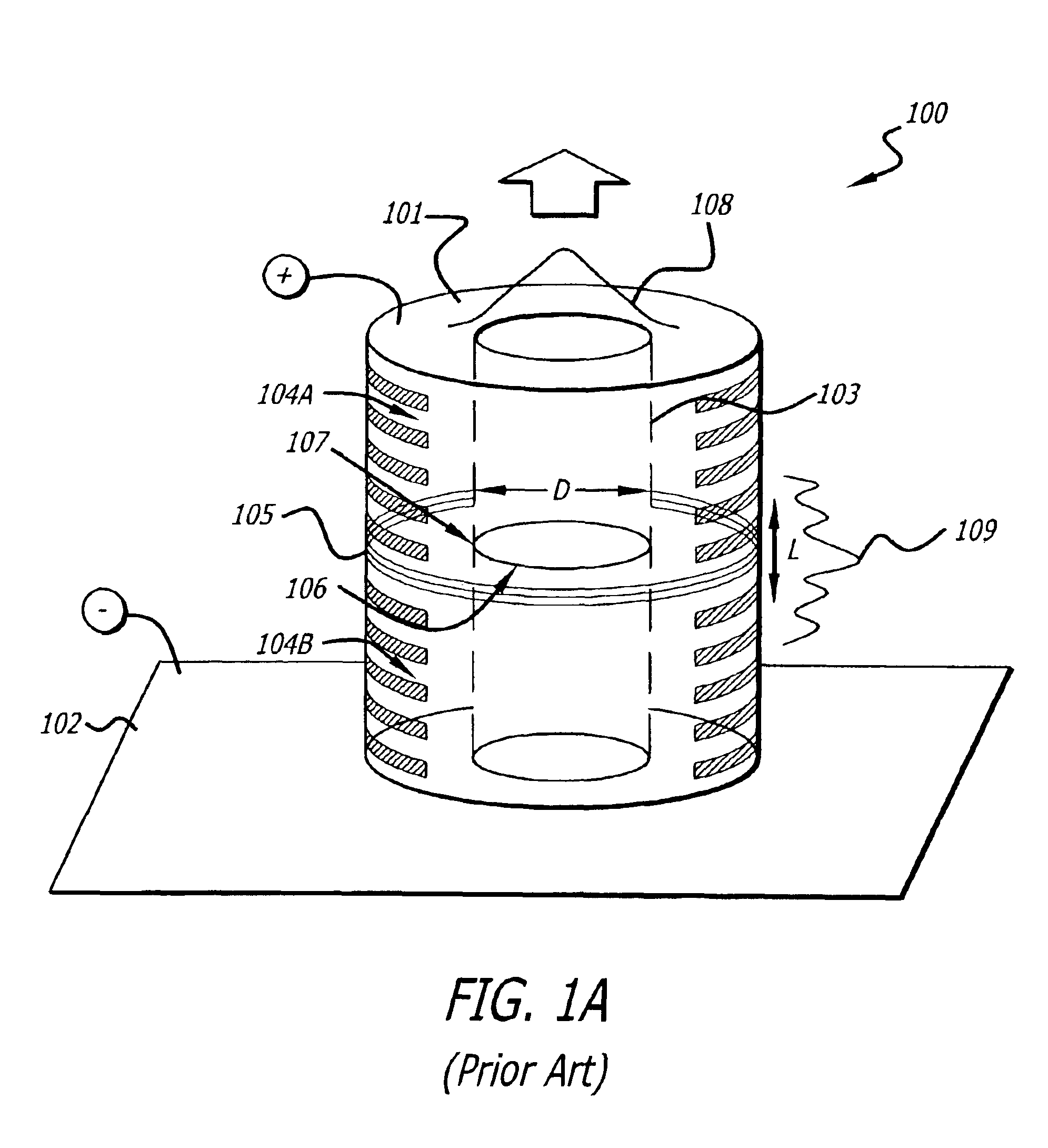Methods for forming index guided vertical cavity surface emitting lasers
a laser and vertical cavity technology, applied in semiconductor lasers, laser details, electrical equipment, etc., can solve the problems of large contact area that cannot be manufactured with low resistance, lack of index refraction difference in the lateral direction of planar proton implanted vcsels to provide good optical confinement, and poor optical confinement performance, so as to improve current confinement, improve optical confinement and proton implantation performance, the effect of minimizing thermal lensing effects
- Summary
- Abstract
- Description
- Claims
- Application Information
AI Technical Summary
Benefits of technology
Problems solved by technology
Method used
Image
Examples
Embodiment Construction
In the following detailed description of the present invention, numerous specific details are set forth in order to provide a thorough understanding of the present invention. However, it will be obvious to one skilled in the art that the present invention may be practiced without these specific details. In other instances well known methods, procedures, components, and circuits have not been described in detail so as not to unnecessarily obscure aspects of the present invention.
A planar index guided vertical cavity surface emitting laser (PIG VCSEL) is provided by the present invention offering improved performance over prior art VCSELs in order to improve communication systems. The PIG VCSEL is substantially planar for ease of manufacturing and provides current confinement by proton implantation and optical confinement by etching holes or partial ridges within the VCSEL surrounding the optical confinement region for index guiding. The desired degree of index guiding is achieved by ...
PUM
 Login to View More
Login to View More Abstract
Description
Claims
Application Information
 Login to View More
Login to View More - R&D
- Intellectual Property
- Life Sciences
- Materials
- Tech Scout
- Unparalleled Data Quality
- Higher Quality Content
- 60% Fewer Hallucinations
Browse by: Latest US Patents, China's latest patents, Technical Efficacy Thesaurus, Application Domain, Technology Topic, Popular Technical Reports.
© 2025 PatSnap. All rights reserved.Legal|Privacy policy|Modern Slavery Act Transparency Statement|Sitemap|About US| Contact US: help@patsnap.com



